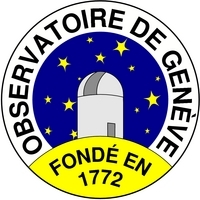
| INTEGRALPlanckGaiaPOLARCHEOPSEuclidATHENA |
| HEAVENSFACTCTALOFTSPICAJEM-EUSOXIPEeXTPTheseus |
| XRISMMAGBOUNDSMARTNet |
| ISDCCDCI |
| Data Centre for Astrophysics Astronomy Department of the University of Geneva |
| ISDC Seminar |
Mike Eracleous
Pennstate
Three LINERs Under the Hubble Space Microscope
Abstract. Low-Ionization Nuclear Emission Regions (LINERs) are found in approximately half of nearby galaxies. Their defining characteristic are strong, forbidden emission lines from ions in low-ionization states, e.g., [O I], [O II], [N II], [S II], that are emitted from a region of a few hundred parsec in size at the center of the galaxy. The vast majority of LINER nuclei harbor accreting, supermassive black holes, which suggests that photoionization by radiation from the accretion flow may be responsible for the relative intensities of the emission lines of LINERs. But other models invoking shocks or hot stars can also explain many aspects of the observed spectra. Moreover the active nuclei in LINERs do not emit enough ionizing photons to reproduce the absolute strengths of the emission lines from the line-emitting gas. In this talk, I will begin with a historical introduction to LINERs and then go on describe the puzzles and open questions. In the last part of the talk I will describe spatially-resolved spectroscopic observations of three LINERs that our team carried out recently with the Hubble Space Telescope. We achieved a spatial resolution of better than 10 pc, effectively placing the galactic nuclei under the microscope and looking for the source of power responsible for the emission lines on a variety of scales from a few pc to 100 pc. Based on a detailed comparison of observed emission-line strengths to model predictions, we found that photoionization from the active nucleus indeed powers the line emission in the inner 20-50 pc. At larger distances from the nucleus shocks appear to be responsible for exciting the gas. The shocks in this small sample of galaxies are likely a result of the interaction of jets with circumnuclear gas. Thus, the characteristic LINER spectrum represents a combination of multiple excitation mechanisms.







